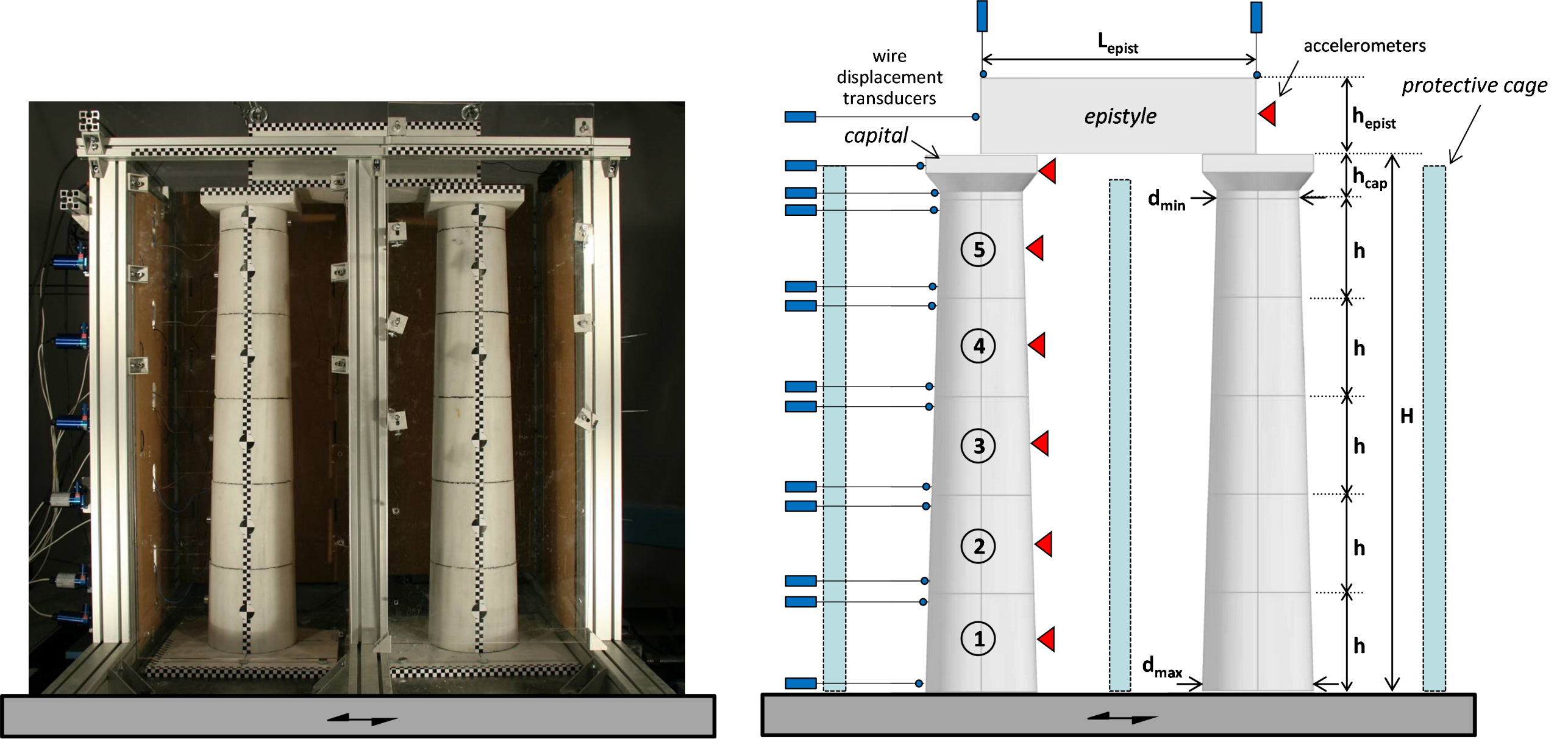Preservation of Cultural Heritage
The preservation of cultural heritage is of profound significance for modern societies. Remnants of Greek and Roman Temples are found all over the Mediterranean, surviving in most cases in the form of free-standing columns and portals. Being extremely slender, they are usually considered prone to overturning when subjected to seismic shaking. As part of the FP7-funded “Perpetuate” research project, we investigated the seismic response of multi-drum columns, employing shaking table testing (external page J55). The experiments revealed a remarkable performance. Subjected to the strongest motions ever recorded in Greece, where many of these monuments are situated, the columns hardly suffered any permanent deformation. Besides rigid-body rocking, sliding and/or rocking between drums also take places, leading to increased energy dissipation and continuous shifting between different modes of response. Portals proved even more robust, surviving even extreme seismic excitations (external page J59). Their superior performance is related to the beneficial role of the epistyle, which adds energy dissipation and restoring force to the system.

Although there is a rich body of literature on the seismic response of historic masonry structures, the problem of tectonic deformation had not been addressed. Even if modern structures could be designed to withstand or relocated to avoid active faults that are already known, this is presumably inapplicable to monuments. Hence, it is necessary to account for faulting-induced loading in the seismic assessment and retrofit of historic structures in seismically active areas. In context, we investigated the response of historic masonry buildings to tectonic ground displacement, by analysing with 3D finite elements a simple yet representative soil–foundation–masonry wall system (external page J58). Our study showed the advantageous performance of rigid and continuous foundations as opposed to more flexible isolated supports, indicating foundation strengthening as an efficient mitigation measure.

Selected recent publications

Drosos V. & Anastasopoulos I. (2015). “Experimental investigation of the seismic response of classical temple columns”, Bulletin of Earthquake Engineering, 13, 299-310. (external page J55)

Drosos V. & Anastasopoulos I. (2014). “Shaking table testing of multidrum columns and portals”, Earthquake Engineering and Structural Dynamics, 43, 1703-1723. (external page J59)

Loli M., Anastasopoulos I. & Gazetas G. (2015). “Nonlinear analysis of earthquake fault rupture interaction with historic masonry buildings”, Bulletin of Earthquake Engineering, 13, 83-95. (external page J58)